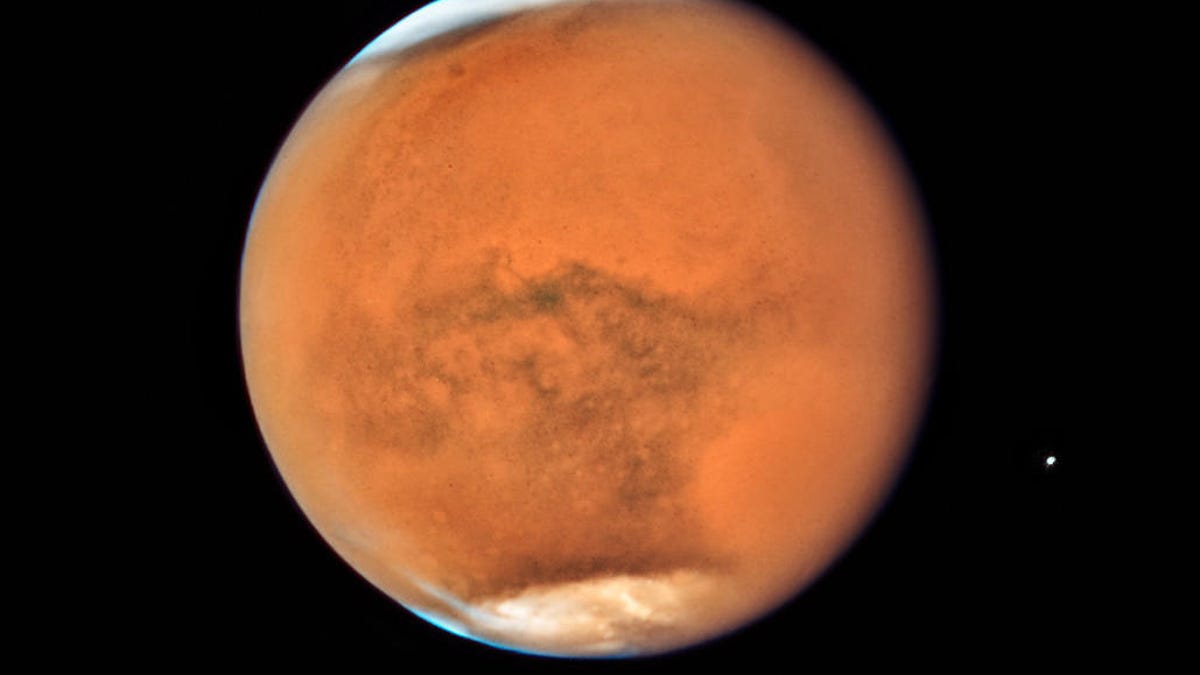Did NASA find life on Mars in the 1970s? It's still up for debate
Former NASA scientist Gilbert Levin reminds us of a Mars mystery from the 1970s Viking mission.

Hubble Space Telescope snapped this portrait of Mars.
Life on Mars. Those three words are enough to make anyone do a double take.
Former NASA scientist Gilbert Levin worked on the historic Viking mission to Mars in 1976, which saw NASA land a spacecraft on the surface of the red planet for the first time. Levin published an opinion piece in Scientific American last week titled "I'm Convinced We Found Evidence of Life on Mars in the 1970s."
This is what NASA's Viking landers looked like.
That's a fabulously clickable headline, but it's not new. Levin's statement has a long history behind it.
Levin was the principal investigator of the Labeled Release (LR) experiment. LR involved inoculating Martian soil with nutrients. It then looked for signs of metabolism that might indicate the presence of microbial life.
According to Levin's analysis, the twin Viking landers discovered signs of microbial respiration, indicating the presence of life on the seemingly barren planet. However, other Viking experiments found no evidence of organic molecules in the soil.
NASA revisited Viking in 2016 when it digitized the data from the mission microfilms. "The science team believed the LR data had been skewed by a non-biological property of Martian soil, resulting in a false positive," NASA said. "While arguments continue, this remains the consensus view."
Levin has been promoting his work and convictions for years, including publishing an article in the journal Astrobiology in 2016 along with LR co-experimenter Patricia Ann Straat. The article lays out their case for believing that Viking positively identified extant microbial life on Mars.
NASA's still-running Curiosity rover mission on Mars has turned up intriguing evidence of methane and other organic compounds on Mars. These are some of the basic building blocks of life, but this is not the same as finding living microbes. Still, we can't yet rule out the possibility of life on Mars.
Levin has remained unwavering in his assessment of the Viking data while other scientists are equally convinced the results were inaccurate. It's important to note Levin's ideas of life on Mars may well be right and the LR experiments were run numerous times -- but the idea at the heart of good science is to perform repeated experiments and provide reproducible results.
Other evidence points to the possibility of life, but not enough to draw a definitive conclusion about one of the biggest questions we're yet to answer: "Are we alone in the universe?"
Of course, that means the debate won't die anytime soon. In Levin's Scientific American piece, he suggests that the LR data be reviewed by a panel of experts to definitively state whether or not life really was detected by the Viking experiments in the 1970s.
Now we just need to hurry up and send some people there for a closer look. Paging Elon Musk and SpaceX . Can we get a Starship out there ASAP?

